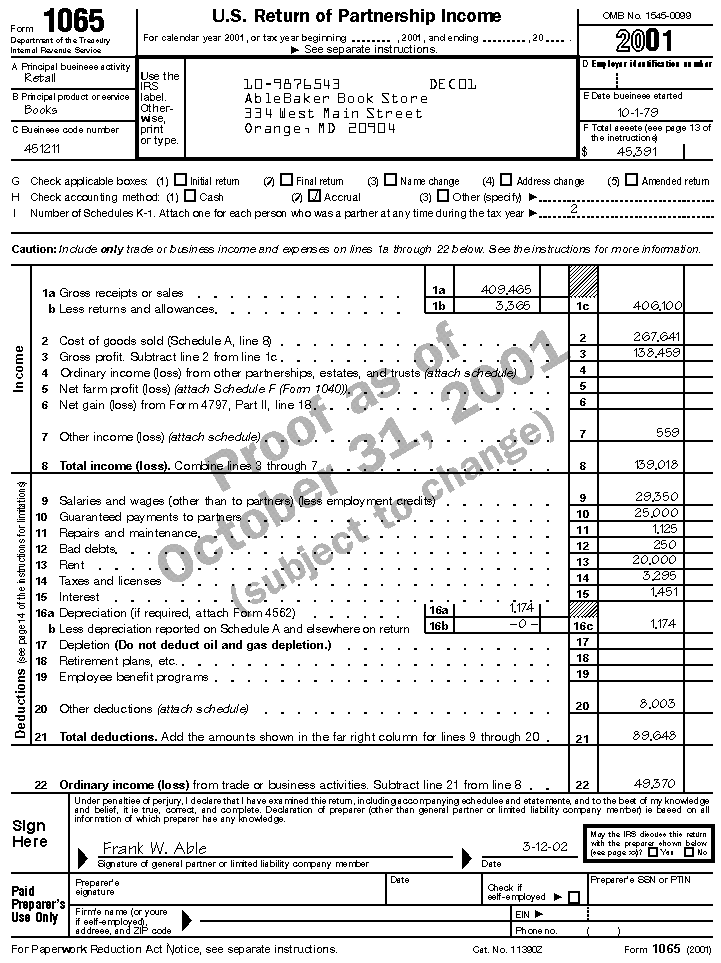
Companies incur or report expenses in their income statement but are not legally due. So, the business must acknowledge the expense as the profit it receives. These obligations are the result of the accrual method of accounting. According to this method, charges are recorded in the order they were paid. This is in line with accounting for timing and matching rules of accounting. Suppose you have taken a loan of $10,000 that needs to be paid off in ten years.

The liabilities of a business must be recorded and accounted for to keep track of all costs. In order for the business to keep track of what is owed to others, they should be recorded within the business’s accounts and financial statements. The balance sheet, for example, consists of both the liabilities of a company, as well as its assets.
Assets vs Liabilities
Rather, it invoices the restaurant for the purchase to streamline the drop-off and make paying easier for the restaurant. A liability is something a person or company owes, usually a sum of money. Liabilities are settled over time through the transfer of economic benefits including money, goods, or services.
Xi Jinping puts China’s security ahead of tackling its economic woes – Financial Times
Xi Jinping puts China’s security ahead of tackling its economic woes.
Posted: Mon, 04 Sep 2023 00:31:22 GMT [source]
The liquidity of an asset measures how fast you can convert the asset into money. Assets like cash, your bank balance, and bonds are highly liquid assets. On the other hand, some assets—like your tools—won’t generate quick cash. Another example—liabilities might not always be money you borrowed or loans you have taken. Even an upcoming premium for your worker’s comp insurance is a liability. It’s important to recognize these liabilities and try to find ways to minimize them.
Liability: Definition, Types, Example, and Assets vs. Liabilities
Expenses include utility expenses, interest paid, purchases of supplies or materials, or payments for services such as maintenance or deliveries. Liabilities are debts or obligations a person or company owes to someone else. For example, a liability can be as simple as an I.O.U. to a friend or as big as a multibillion-dollar loan to purchase a tech company.
- However, organisations always try to set up the date of the clearing.
- Liabilities are debts or obligations a person or company owes to someone else.
- Some common liabilities in business include payroll, utilities, rent payments, interest owed to lenders, and orders listed in accounts payable that is owed to customers.
- Companies usually separate their liabilities according to their time horizon when they become due.
- But you still need to negotiate the price, arrange for pickup, and get your money.
For example, Hourly connects workers’ comp directly with payroll–so premiums are always accurate and you’re never paying for more or less coverage than you actually need. The first appears on a company’s balance sheet, whereas the second is on its income statement. In this scenario, an obligation is an unpaid balance the restaurant owes to its wine supplier. On the other hand, the wine supplier views the money it owns as an asset.
Non-Current (Long-Term) Liabilities
Current liabilities are debts that a company has to pay during a normal operating cycle, generally not more than 12 months (as opposed to long-term obligations due after the 12-month mark). To achieve this, the company has to control the relationship between its current assets and liabilities carefully. Knowing your business inside out determines your success as a business owner. Most business owners have a basic understanding of how much their business owns and what it owes other people. In other words, they are aware of their basic assets (like their bank balance, inventory, and equipment) and liabilities (like account payables, loans, and debts).
A liability is a legally binding obligation payable to another entity. Liabilities are incurred in order to fund the ongoing activities of a business. Examples of liabilities are accounts payable, accrued expenses, wages payable, and taxes payable. These obligations are eventually settled through the transfer of cash or other assets to the other party. Expenses and liabilities should not be confused with each other. One—the liabilities—are listed on a company’s balance sheet, and the other is listed on the company’s income statement.
What is the Definition of Liabilities?
In most cases, lenders and investors will use this ratio to compare your company to another company. A lower debt to capital ratio usually means that a company is a safer investment, whereas a higher ratio means it’s a riskier bet. But there are other net income explained calculations that involve liabilities that you might perform—to analyze them and make sure your cash isn’t constantly tied up in paying off your debts. The outstanding money that the restaurant owes to its wine supplier is considered a liability.

Non-current liabilities are due in more than one year and most often include debt repayments and deferred payments. Investors will use calculations such as the current ratio to divide assets by liabilities to judge the business’s liquidity. Analysts can use the current ratio to calculate the ratio of assets to liabilities to evaluate the company’s liquidity. The greater the ratio, the more secure the business’s financial position is.
Liabilities are key elements on every company’s balance sheet, and therefore, important to stock and bond investors. We use the long term debt ratio to figure out how much of your business is financed by long-term liabilities. If it goes up, that might mean your business is relying more and more on debts to grow. Also sometimes called “non-current liabilities,” these are any obligations, payables, loans and any other liabilities that are due more than 12 months from now. Using Apple’s balance sheet from 2022, we can see how companies detail current and non-current liabilities in financial statements.
- Recorded on the right side of the balance sheet, liabilities include loans, accounts payable, mortgages, deferred revenues, bonds, warranties, and accrued expenses.
- Liabilities can help companies organize successful business operations and accelerate value creation.
- Liabilities can take many forms, from money owed for operating expenses to bills incurred by the business to the inventory that is owed to customers.
However, poor management of liabilities may result in significant negative consequences, such as a decline in financial performance or, in a worst-case scenario, bankruptcy. Having liabilities can be great for a company as long as it handles them responsibly. Sometimes borrowing money to fund company growth is the right call, but if your company is routinely taking on liabilities that you can’t repay in time, you might be in need of bookkeeping services.
Workings of Liabilities
When a retailer collects sales tax from a customer, they have a sales tax liability on their books until they remit those funds to the county/city/state. For instance, Patel Pvt Ltd has to pay an annual interest of ₹1,00,000. Therefore, Patel Pvt Ltd would be able to recognise the amount of ₹25,000 from the overall interest cost on their income statements at the close of March. Additionally, the company will add the accrued liability by the same amount on its balance sheets. In the meantime, Patel Pvt Ltd will keep showing the same amount in its accounts books even though the liability isn’t yet due until the year’s end. You can also refer to accrued liabilities in the field of accrued expense.